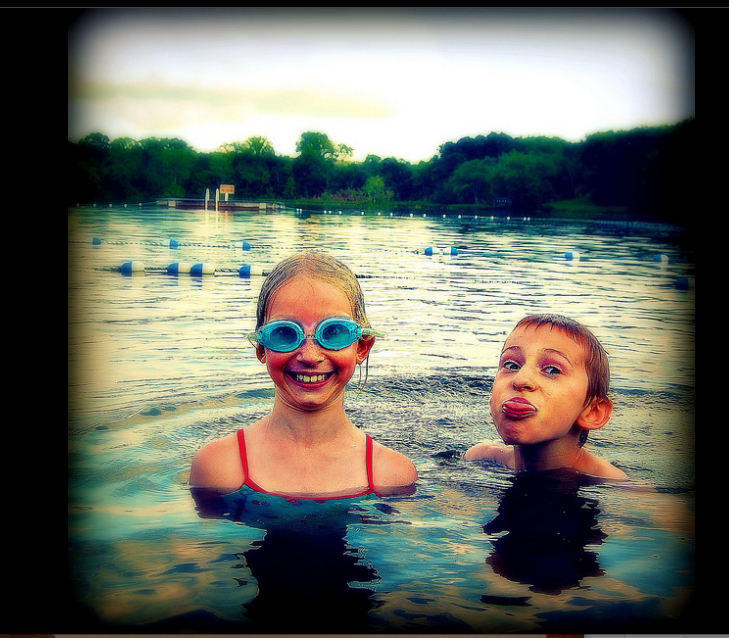 Remember picture day at school? I hated picture day. There was a permanence to it that was terrifying. I knew my parents would have that wallet-sized photo of me forever, so I felt like I had one shot to get it right. Smile right, wear the right clothes, and make sure your eyes were open, for heaven’s sake! I am not sure who thought those glasses were the right size for my face, but it was the eighties (yes, that is me!)
Remember picture day at school? I hated picture day. There was a permanence to it that was terrifying. I knew my parents would have that wallet-sized photo of me forever, so I felt like I had one shot to get it right. Smile right, wear the right clothes, and make sure your eyes were open, for heaven’s sake! I am not sure who thought those glasses were the right size for my face, but it was the eighties (yes, that is me!)
For today’s kids, every day is picture day.
Armed with smartphones, their friends are taking pictures of them constantly. At any time, someone can snap a picture of your child—asleep on the school bus on the way home from a class trip, possibly drooling a little. In the locker room changing, or a in whole host of other inopportune moments.
It’s not just their friends—it’s you, too! You love your kids, and you want to capture the precious moments of them growing up. Look at your smartphone—how many images of your little darlings are there? Unless you are Jodi Foster, there are not as many pictures of you as a kid. Remember how we all felt for Chelsea Clinton in the 90s? You are the major source for your child’s digital presence.
Do you wish there more pictures of you as a tween? Probably not. Think about your top ten most embarrassing moments as a tween and imagine if there were pictures to record each of your failings. Or hairstyles. Shared. With everybody.
Photos mean something different to our kids than they did to us. They live in a more visual culture. Cameras are everywhere, built into the devices we carry with us at all times. Digital photos cost nothing to take, nothing to store, and nothing to share. Having a photo to mark every experience more of an expectation for these kids, but the proliferation of images also lowers the impact of each photo in our kids’ minds. We fret over the their “permanent” record but don’t spend enough time thinking about the permanence and publicity in using our social media wall as a family album. Digital images feel ephemeral to our kids, rather than permanent, which can distort their decision-making process.
 So, I want you to try something radical. Right now. If you have a kid who is 9 or older, do not share another picture of her. That is, until you ask her permission.
So, I want you to try something radical. Right now. If you have a kid who is 9 or older, do not share another picture of her. That is, until you ask her permission.
Yes, ask permission. It sends a message, and will accomplish some important things:
-
It teaches your child that her image is her own. It makes her recognize that sharing is a choice and that some things are private. Because you showed her that consideration and modeled some respect for her privacy, she’ll be more likely to ask before she shares a picture of her friend.
-
It teaches good boundaries. It’s important for a child to know that she can say no. The very act of asking for permission creates a moment of stop-and-think. This pause is very helpful—we could all benefit from it.
-
It teaches empowerment. Asking permission affords power to your child. It’s now her choice, not yours. It’s a wonderful gift, and she’ll start to expect the same consideration from her friends. Your daughter will feel empowered to say, “don’t share that,” when someone takes a photo of her. She can insist, “show me that you are erasing that.”
-
It teaches self-control. Now that you’ve established the guidelines of respect, urge your child to ask herself for permission to take or share a “selfie.” Social media is part of journaling, recording feelings, and celebrating small moments. You don’t want to quash that, but you want her to think about the risks.
Taking this step creates a respectful relationship. Your child will have a better understanding of this complex social exchange because you’ve modeled it. It will help her understand why it’s important, too. Talk to your child directly about how it makes her feel, and urge her to think about how others would feel when she’s the one taking the photo of her friends.
By respecting your children’s wishes, you are teaching the basics of good social media manners. This will pay dividends beyond beyond photo sharing. It will form a good foundation for your child to make better decisions about the new participatory media landscape.
PS: Would you like informative posts like this in your inbox? Along with occasional updates and offers ? Sign up here!
You can also follow me on Instagram or Twitter to make sure you don’t miss other posts. I’d love to read your comments. Have you tried this with your children? How did it go?
Photo Credit: Second Photo is by Daniela Reinsch
